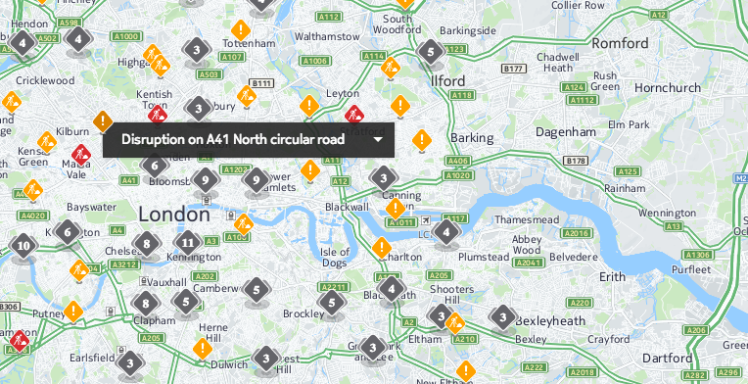LAS VEGAS — It’s evident here at the CES show that automakers are moving quickly toward offering a real self-driving car, but it’s the absence of detailed mapping data that might delay its arrival on the roads.
Indeed, much of the focus has been on the development of better sensors and radar systems, and companies like Audi, Mercedes, and Ford have made big strides with the technology. Ford CEO Mark Fields told VentureBeat that he believes a fully autonomous vehicle will hit the market within five years.
The goal many are pursuing is to make large urban areas safe for self-driving cars. This, after all, could dramatically reduce the 34,000 or so car accidents that happen in the U.S. every year.
The technology actually works pretty well when conditions are right. Back-up cameras work very well, as do sensors that detect when the driver is falling asleep.
But self-driving cars still rely on the white and yellow lines painted on the roadways to know if they are on course. And these lines don’t appear in the mapping data currently used in car navigation systems. The data is just not available.
Floris van de Klashorst of Nokia‘s Here navigation data division (formerly called Navteq) says his company is now working on a product that will provide far more detailed information about roads. This will include data about the lanes of a freeway, for example, and not just treat it as one big road.
Van de Klashorst points out that a self-driving car will have to know where each lane is if, say, it’s driving on a six-lane Los Angeles freeway and needs to change lanes to reach an exit. And the navigation system must have a way to provide that data to the car so that it has time to move across the lanes.
Van de Klashorst also says that his company is working with the major automakers to gather navigation data from the sensors on all cars on the road. This might help a self-driving car avoid bad road conditions or traffic congestion seen by other cars.
The navigation system, for instance, might detect that the cars ahead of it on the road are driving only 20 miles per hour in a 55 mph zone, suggesting that there is some sort of obstruction on the road.
Here’s advanced mapping product is called HD Map. The company has already completely mapped a few cities down to the detail needed for autonomous cars, but it still has many cities to go.
The good news is that the really labor-intensive part is creating the systems to collect the enhanced roadway data, van de Klashorst says. After the systems are developed and thoroughly tested, the job of mapping the roadways — in high-definition — gets a little easier.
VentureBeat's mission is to be a digital town square for technical decision-makers to gain knowledge about transformative enterprise technology and transact. Learn More

